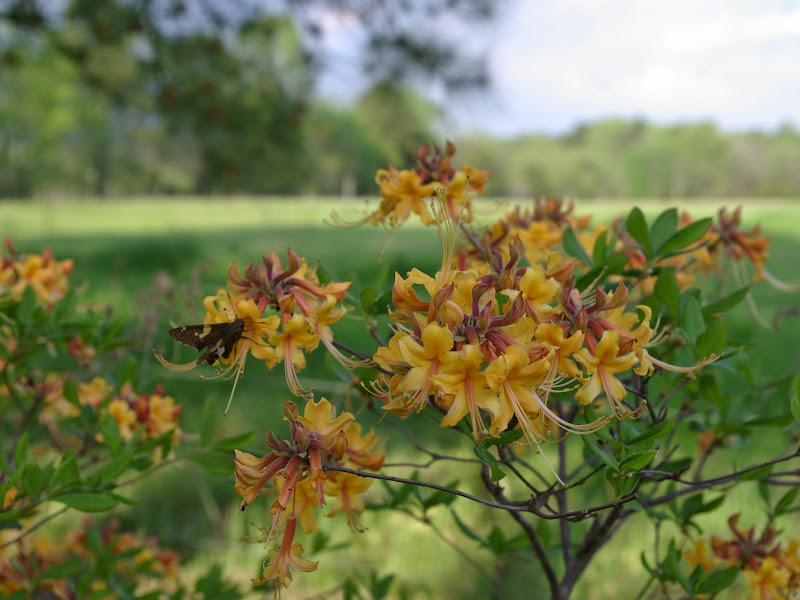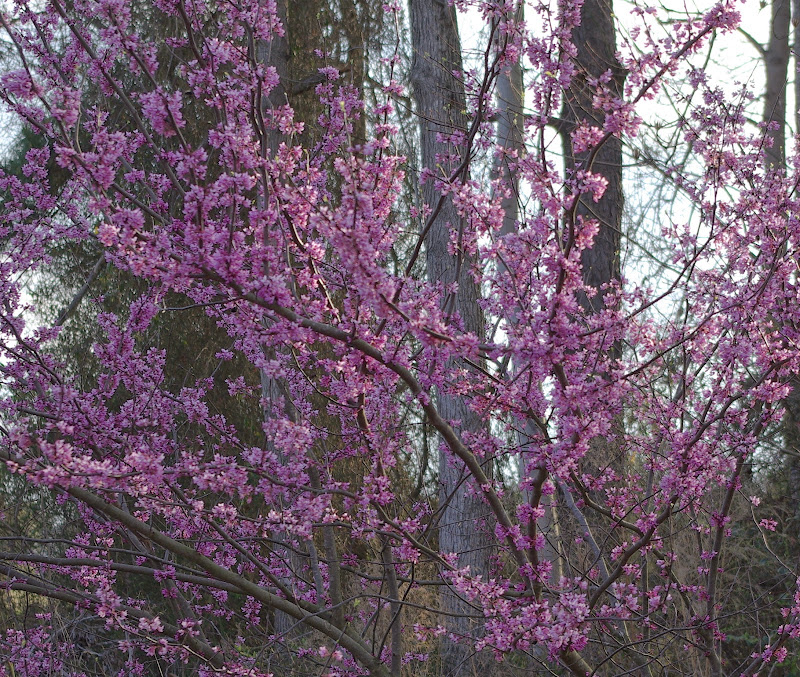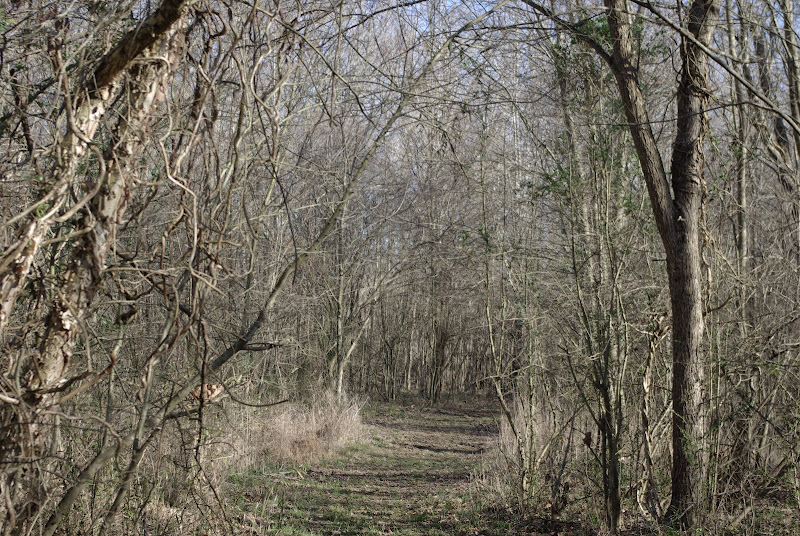Spring is a time that heralds the reappearance of stars and old friends, a reappearance that may have been been anticipated for months or even all year. Some may only take the stage for a few days or a week but they are memorable nonetheless.
The flowers of Serviceberry are often fleeting. An unusually warm day will cause the fleecy white blooms to blow quickly. However the new silvery green leaves are perhaps even more beautiful. There are four Serviceberry in and near the gardens, and one between the pastures. There used to be one behind the old house in its original site, pushed over when the house was cleared, but lasted long enough for one final hurrah: in full bloom it looked just like the lacy train of a bride's dress.
The wild Crabapple is in full bloom. Not only is it gorgeous in full bloom, the flowers are long-lasting for a crabapple and commands admiration for about 2 weeks from start to finish.
The walk down to the creek is especially nice this time of year.

There is Lyreleaf Sage and Atamasco Lilies blooming in odd places, and the grass and new leaves are enchanting shades of spring green.
The Wood Ducks have returned to the newly filled slough (G. saw 6 the other day), and when I walked down to the creek yesterday to get cuttings from the crabapple and Possamhaw (
Ilex decidua) I saw two Bobwhite Quail and a male Prothonotary Warbler. He was singing as he foraged. I couldn't get a good picture since I didn't have the right lens but take my word for it when I say he is beautiful. Glowing gold with slate blue-gray wing feathers.
And I discovered another crabapple! A big one, growing close to the creek. I don't know how we didn't see it before.
G. needs to do some chainsawing around it and a third one that's growing next to the path but it should be a relatively simple task. We need more firewood anyway.
The color of the Sycamore bark has changed from ghostly grey and white to caramel and cream.

Compare to March:

In the garden there is something new blooming every day. The pink and white Piedmont azaleas are finishing up and now the Pinxterbloom azaleas are open.
The Florida azalea to the left could use some company. It's one of the four that used to be in front of the house in its original locale and the one that fared the best. One was lost and another two are very much smaller but alive and growing to the east of the house. I have a 'Choice Cream' azalea (an atlanticum x austrinum hybrid) that I want to put next to it this fall. It has lovely fragrant light butter yellow flowers.
The bright orange sherbet flowers of the Florida Azalea could use some help playing better with the pink azaleas even if they're not that close together.
There are more flowers open on 'Old Blush' every day.

The Amsonias are blooming, both in the garden and in the floodway fields.

Next to the house the Coast Azaleas, Woodland Phlox, Virginia Bluebells and 'Homestead' Verbena are blooming.
When growing columbine from seed you never know what you're going to get, but I've never met one I didn't like.
Virginia Bluebells are such a soft heavenly shade of blue. We used to see huge clumps of these in the river bottoms when we lived for three years in western Pennsylvania. They were gorgeous. I have only one clump in the garden this year but this flower is so lovely that a little or a lot doesn't really matter.
This Common Lilac was supposed to be white (it was free, obtained in a trade), but to be truthful I'm happy that it's lavender. Even happier and surprised that it's actually thriving, tucked as it is in a damp spot beside a rugosa. Common Lilacs are notorious for not doing well here. I love that lilac fragrance.

I hope your spring is likewise full of good surprises!



































































